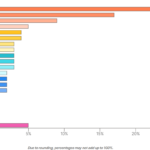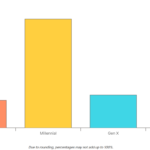Exactly Who Works with APIs? We Found Out
Postman’s State of the API Report continues to be one of the most comprehensive surveys of its kind. The 2021 edition was the largest ever, with more than 28,000 API professionals providing a sweeping perspective of the API landscape.
With Postman Open Technologies dedicated to improving API practice in IT shops of all shapes and sizes, we perform extensive research and analysis. Regarding the State of the API Report, we wanted to know who these professionals are and what they can tell us about how the API industry is evolving.
APIs are for everyone, not just developers
A significant trend that has emerged is the number of API practitioners that identify as something other than a developer. In the 2021 survey, approximately half stated their role was development-related. These titles included frontend and backend engineering, for example. Full-stack developers, in fact, accounted for 27% of the responses.

However, that also means the remaining half of the population is responsible for something other than creating code. In 2020, one in 10 of those working with APIs are in management roles—from the C-suite to directors and managers. Only a year later, that ratio increased to one in 8. Meanwhile, business analysts, data engineers, and support roles comprised almost 7% of survey takers—positions that even as recently as 2019 were too small in aggregate to warrant as a separate call-out.
The data shows a diversification in the types of roles. Further, there is a slight but noticeable increase in the percentage of API participants within these roles.
Taking a broader view, this makes sense. Across numerous industries, we see companies attempting to become more data-driven. According to Forbes, 83% of CEOs want their organizations to be more data-driven. Increasingly, whether we’re talking about machine-learning model generation, operational dashboards, or regulatory reporting, the data for those activities is made available via an API. And those activities are vital to a host of job families, not just those in whose main interface is an IDE.
“Getting at” this data used to rely on engineering intermediaries, subject matter experts capable of rummaging around in the bowls of complex systems and returning with queried results in hand. Unfortunately, these people—most likely already short on time and bandwidth—became critical dependencies for crucial insights.
As the survey shows, however, providing information via APIs has enabled a gamut of job types to leverage low-code tooling, like that which is available in the Postman API Platform, to retrieve that information at their discretion.
APIs are an entry point for young software professionals
While the primary job function for API practitioners tells us where the industry is going, a careful look at the years of experience and generation tells us where we are. When asked about the number of years of API experience, 76% of respondents reported between just zero and five years of experience with API development. This finding is surprising, as web-based API development is several decades old. Roy Fielding published the dissertation codifying the RESTful API style in 2000, the infamous “Bezos memo” occurred around 2002, and Swagger 1.0 (the precursor to OpenAPI) was released more than a decade ago.
Looking at the generational responses, those new to API development and use aren’t just industry veterans being tasked with APIs for the first time. Nearly 80% of individuals identified themselves as belonging to either the Millennial or Gen Z generations.

In other words, the API field is dominated by individuals early in their professional careers. On the positive side, these generations were the first to grow up in the Internet Age—their increased familiarity with greater compute, mobile and always-on services, and social media usage elevate the expectations of the web APIs they interact with. A challenge, however, is that much of the foundational storytelling may be unknown to this new cohort. Those important, and sometimes painfully learned industry lessons, need to be refreshed and retold for these new practitioners.
The phenomenon isn’t new. The 2019 State of the API Report also found, “A small, but significant segment of developers have 10 or more years of experience, compared to more than three-quarters who have five or fewer years of experience [emphasis added].” Given the critical role that APIs play in a company’s operations, organizations must exert special care to ensure that those responsible for API work get the support they need to succeed.
Conclusion
The Postman 2021 State of the API Report provides tremendous insight for those working with APIs (as well as those that manage them). The latest edition suggests that the number of job families dependent on APIs continues to diversify. At the same time, the people performing that work are earlier in their careers than their more established counterparts. Ensuring that APIs are accessible and usable by non-engineering audiences and properly supporting individuals just beginning their API journeys are both challenges that API leaders need to address in the coming year.

What do you think about this topic? Tell us in a comment below.